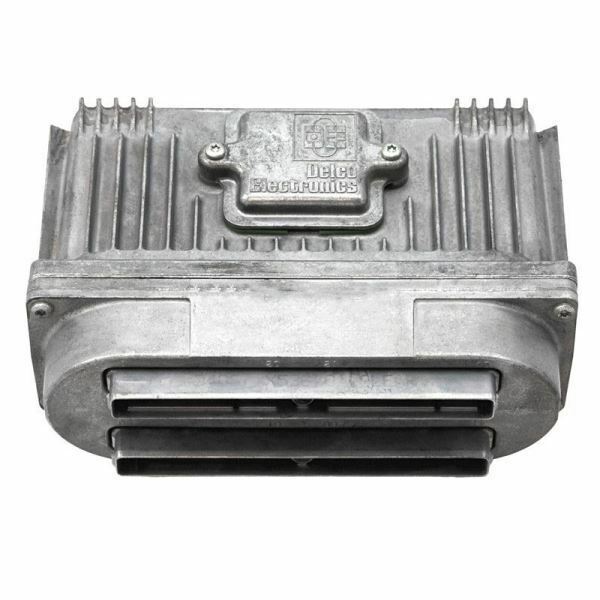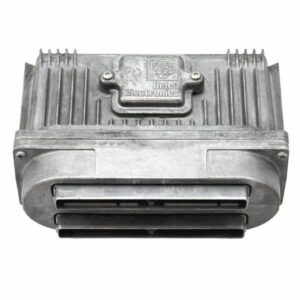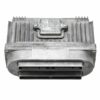Restore Your Vehicle’s Performance and Reliability
Is your 1997 Buick Century—or another compatible GM vehicle—suffering from frustrating issues like intermittent stalling, a persistent Check Engine Light, poor fuel mileage, or erratic transmission shifting? These are classic signs of a failing Powertrain Control Module (PCM), also known as an Electronic Control Module (ECM). As the central computer for your engine and transmission, a faulty ECM can disrupt nearly every aspect of your vehicle’s operation. This isn’t just an annoyance; it’s a reliability and safety concern. This module is the definitive solution, designed to restore your vehicle’s original performance and get you back on the road with confidence.
We take the guesswork and high costs out of the repair. Unlike a generic part from a salvage yard or parts store, this 1997 Century ECM comes fully programmed to your specific vehicle. Before we ship, we flash the module with the latest GM-authorized software updates using the Vehicle Identification Number (VIN) you provide. This critical step ensures seamless communication between the computer and all your vehicle’s systems, eliminating the need for an expensive trip to the dealership for programming. It’s a direct-fit, ready-to-install solution.
From the Diagnostic Bay: The Case of the Unpredictable Grand Prix
I remember a 1997 Pontiac Grand Prix that came into my shop with a maddeningly intermittent no-start condition. The owner had already replaced the battery, starter, and fuel pump. It would run fine for days, then refuse to start for no apparent reason. After connecting my scan tool, I found no communication with the PCM. When it did communicate, it threw a P0601 (Internal Control Module Memory Check Sum Error). After verifying the power and ground circuits to the module were solid, the diagnosis was clear: the ECM itself was failing internally. We installed one of these VIN-programmed modules, performed the quick security relearn, and the car started reliably every single time. It’s a fix I’ve performed hundreds of times on these GM platforms.
Is Your GM Vehicle Showing These Signs?
A failing ECM can manifest in numerous ways. If you’re experiencing any of the following, this module is the likely solution:
- ✔ Check Engine Light is on with codes like P0601, P0603, or P0605
- ✔ Vehicle cranks but refuses to start
- ✔ Intermittent stalling, especially when warm or at idle
- ✔ Noticeable decrease in fuel economy
- ✔ Harsh or erratic automatic transmission shifting
- ✔ Engine runs rough, misfires, or hesitates on acceleration
- ✔ Failure to pass an emissions inspection
A Straightforward Guide to Installation
Installing your new 1997 Century ECM is a manageable job for a DIY enthusiast or any professional mechanic. While specific locations vary slightly by model, the general process is consistent.
- Safety First: Always disconnect the negative terminal from your vehicle’s battery before starting any electrical work.
- Locate the ECM: On most of these 1997 GM vehicles, the ECM is located in the engine bay, often inside the air filter housing or mounted to the firewall.
- Disconnect and Remove: Carefully unplug the electrical harness connectors. They have locking tabs that must be released. Then, unbolt the module from its mounting bracket and remove it from the vehicle.
- Install the New Module: Mount the new, pre-programmed ECM in the same location and securely fasten it. Reconnect the electrical harnesses, ensuring they click firmly into place.
- Reconnect the Battery: Reattach the negative battery terminal.
- Perform Security Relearn (If Needed): Many GM vehicles of this era require a simple security relearn procedure to sync the new ECM with the anti-theft system. This typically involves turning the key to the ‘ON’ position for 10-15 minutes, then off, and repeating two more times. Your vehicle’s service manual will have the exact steps.
Verified Vehicle Compatibility
This engine computer is a direct replacement for part numbers 16217058 and 16218070. It is guaranteed to fit the following 1997 models:
- ✔ Achieva (3.1L)
- ✔ Bonneville (3.8L, w/o supercharger)
- ✔ Century (3.1L)
- ✔ Cutlass (Supreme)
- ✔ Eighty Eight (3.8L, w/o supercharger)
- ✔ Grand Am (3.1L)
- ✔ Grand Prix (3.1L or 3.8L, w/o supercharger)
- ✔ LeSabre (3.8L)
- ✔ Lumina Car (3.1L)
- ✔ Monte Carlo (3.1L)
- ✔ Regal (3.8L, w/o supercharger)
- ✔ Silhouette (3.4L)
- ✔ Skylark (3.1L)
- ✔ Trans Sport (3.4L)
- ✔ Venture (3.4L)
Don’t let a faulty computer keep your car off the road. This professionally programmed 1997 Century ECM is the most reliable and efficient way to solve your vehicle’s electronic woes.
Why is providing my VIN so important?
Your VIN (Vehicle Identification Number) allows us to program the ECM with the exact software and calibrations your specific vehicle requires. This includes engine size, transmission type, and any other factory options, ensuring perfect compatibility and performance right out of the box.
Do I need a mechanic to install this?
While professional installation is always an option, this part is designed for straightforward installation. If you are comfortable with basic hand tools and can follow the steps to disconnect a battery and swap a component, this is a very manageable DIY job. The key is performing the security relearn procedure correctly afterward.
Will this fix my car’s hard shifting?
In many cases, yes. The ECM controls the transmission’s shift points and line pressure. If the module is failing, it can send incorrect signals, leading to harsh or erratic shifting. Replacing a faulty ECM often resolves these transmission-related symptoms.
What is the difference between an ECM and a PCM?
The terms are often used interchangeably. ECM stands for Electronic Control Module or Engine Control Module. PCM stands for Powertrain Control Module. In most modern vehicles, a single module (the PCM) controls both the engine and the transmission, which is the case for the vehicles this part fits.
Is any additional programming required after I install it?
No. The core engine and transmission programming is completed by us before shipment. The only potential step you’ll need to perform is the security relearn, which is a simple key-cycling procedure that does not require any special scan tools.



